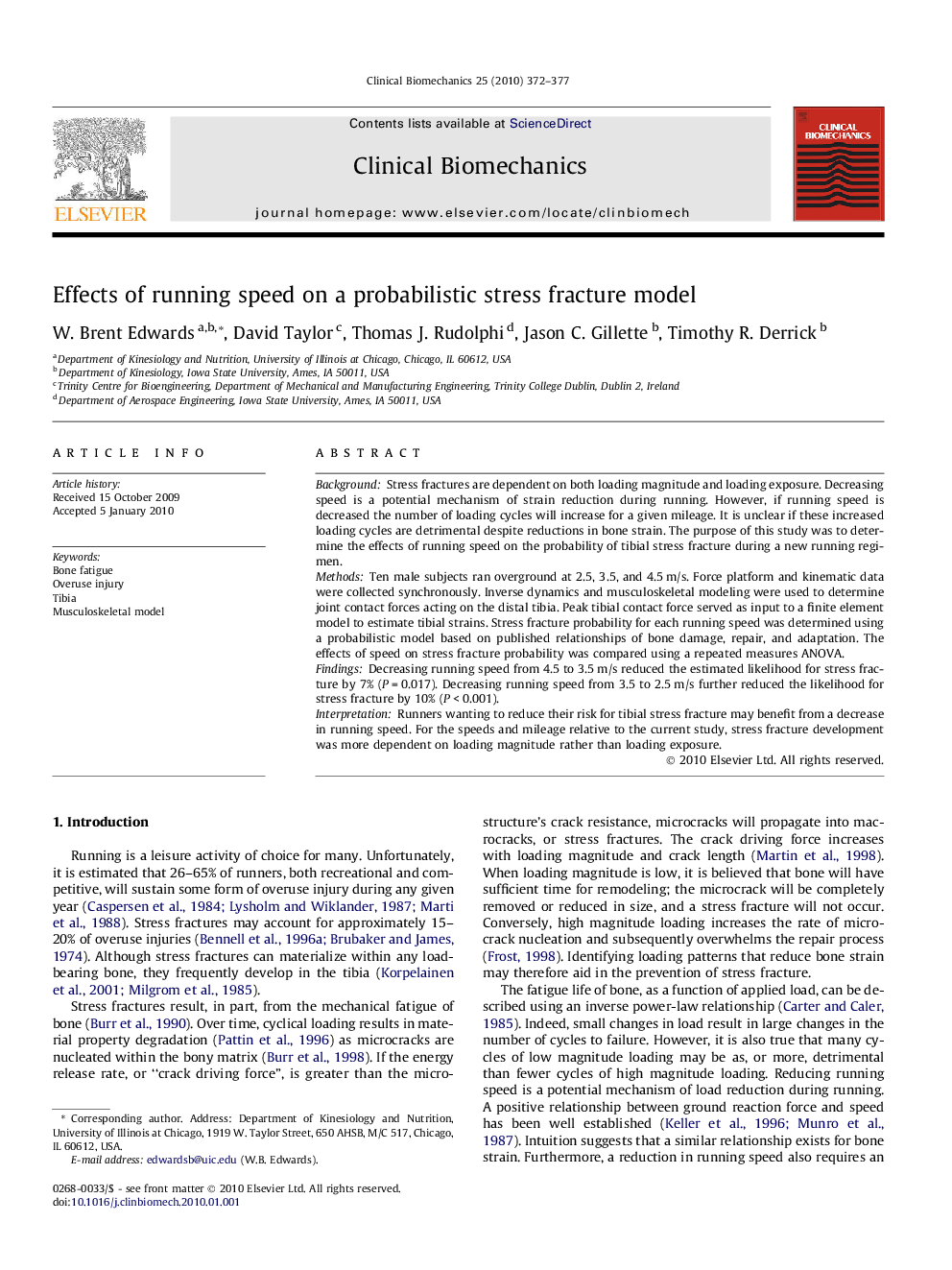| کد مقاله | کد نشریه | سال انتشار | مقاله انگلیسی | نسخه تمام متن |
|---|---|---|---|---|
| 4050624 | 1264947 | 2010 | 6 صفحه PDF | دانلود رایگان |

BackgroundStress fractures are dependent on both loading magnitude and loading exposure. Decreasing speed is a potential mechanism of strain reduction during running. However, if running speed is decreased the number of loading cycles will increase for a given mileage. It is unclear if these increased loading cycles are detrimental despite reductions in bone strain. The purpose of this study was to determine the effects of running speed on the probability of tibial stress fracture during a new running regimen.MethodsTen male subjects ran overground at 2.5, 3.5, and 4.5 m/s. Force platform and kinematic data were collected synchronously. Inverse dynamics and musculoskeletal modeling were used to determine joint contact forces acting on the distal tibia. Peak tibial contact force served as input to a finite element model to estimate tibial strains. Stress fracture probability for each running speed was determined using a probabilistic model based on published relationships of bone damage, repair, and adaptation. The effects of speed on stress fracture probability was compared using a repeated measures ANOVA.FindingsDecreasing running speed from 4.5 to 3.5 m/s reduced the estimated likelihood for stress fracture by 7% (P = 0.017). Decreasing running speed from 3.5 to 2.5 m/s further reduced the likelihood for stress fracture by 10% (P < 0.001).InterpretationRunners wanting to reduce their risk for tibial stress fracture may benefit from a decrease in running speed. For the speeds and mileage relative to the current study, stress fracture development was more dependent on loading magnitude rather than loading exposure.
Journal: Clinical Biomechanics - Volume 25, Issue 4, May 2010, Pages 372–377